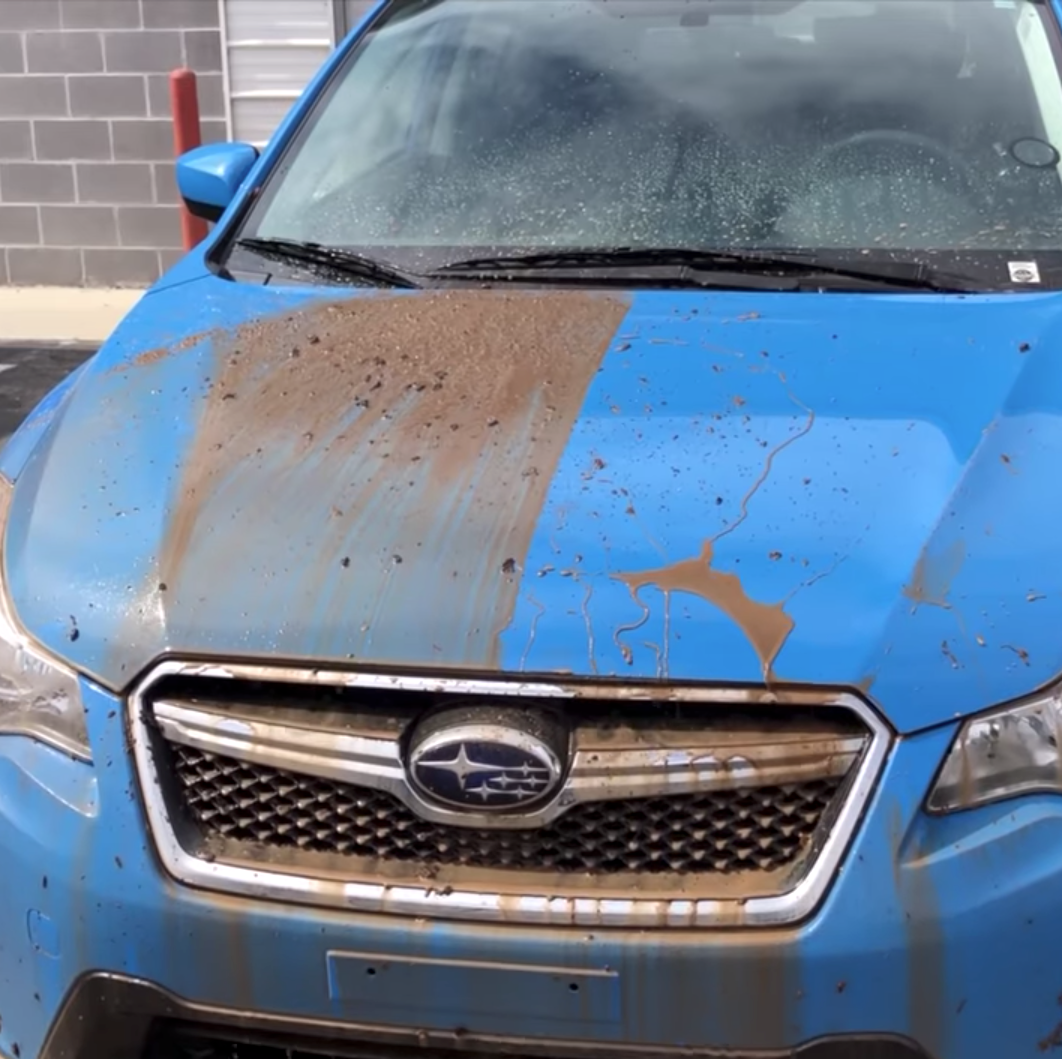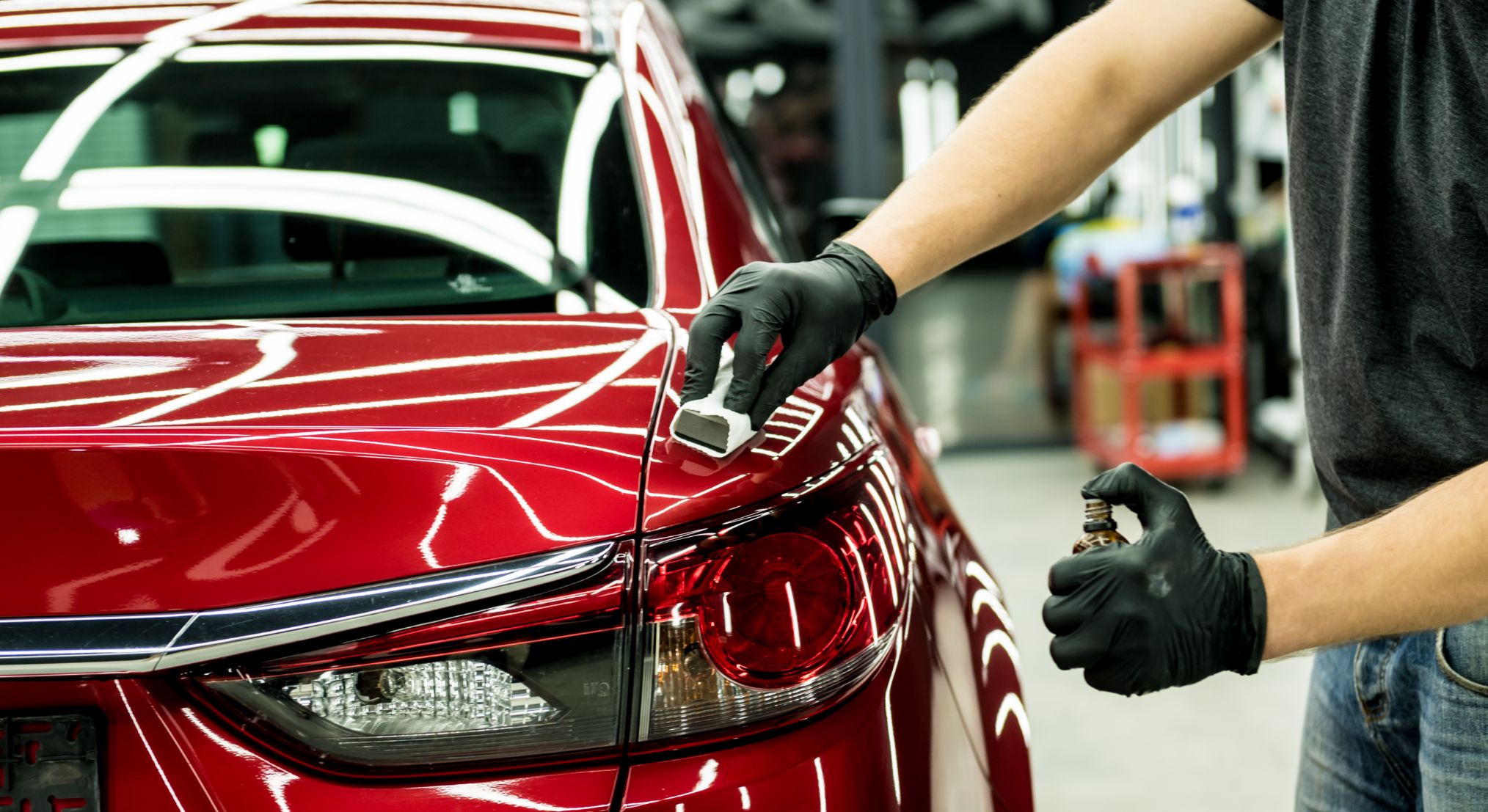Top 5 Myths About Ceramic Coating Explained
Wiki Article
Ceramic Layer vs. Conventional Wax: Which Offers Better Protection?
The argument between ceramic covering and traditional wax for car security is one that merits careful assessment, particularly in regards to sturdiness, resistance to environmental variables, and total upkeep demands. While ceramic coverings guarantee expanded longevity and premium protection against a range of threats, standard wax may appeal to those seeking a much more budget-friendly, albeit temporary, service. As we explore the subtleties of each choice, the ramifications of your choice can have lasting impacts on your lorry's appearance and maintenance regimen. What factors should influence your decision?Summary of Ceramic Covering
Ceramic covering has actually gotten considerable popularity among auto fanatics and experts alike for its sophisticated protective qualities. This ingenious remedy includes a fluid polymer that chemically bonds to the lorry's factory paint, forming a sturdy layer of security. Unlike typical wax, which generally lasts for a couple of weeks to months, ceramic coatings can offer long-lasting security for numerous years, depending on the item utilized and application technique.
While the first expense of ceramic coating might be greater than that of standard wax, the long-lasting advantages, consisting of longevity and lowered upkeep frequency, typically validate the investment. As auto innovation remains to progress, ceramic coatings have become a favored selection for those looking for optimum protection and durability for their lorries.
Summary of Traditional Wax
The attraction of standard wax depends on its simplicity and convenience of usage, making it a favored option amongst car proprietors seeking to boost their car's appearance and provide a basic level of protection. Generally originated from all-natural carnauba or synthetic polymers, traditional wax creates a thin protective layer over the paintwork. The application process is uncomplicated, frequently entailing a basic buffing with a microfiber towel, making it easily accessible to both newbie and knowledgeable individuals.Traditional wax products are offered in numerous formulas, each developed to accommodate details demands, such as improving sparkle or giving water beading. The adaptability of wax enables use on various surface areas, consisting of paint, glass, and also plastic trim. While the application can be done by hand or equipment, the trick is to ensure a tidy surface for optimum attachment.
Nevertheless, one significant attribute of conventional wax is its fairly brief life-span contrasted to modern options. Generally offering protection that lasts from a couple of weeks to a couple of months, constant reapplication is necessary to preserve its efficiency. Despite these limitations, conventional wax continues to be a prominent selection for car enthusiasts that value the visual enhancement it provides.
Trick Protection Features
When thinking about paint defense for automobiles, it's important to understand the vital attributes that differentiate typical wax from advanced alternatives like ceramic finishes. Among the primary safety qualities of ceramic coatings is their toughness. Unlike wax, which commonly lasts a few weeks, ceramic finishings can sustain for numerous years, supplying long-term defense versus he said ecological impurities.Ceramic layers produce a hydrophobic surface area, repelling water and protecting against dirt, gunk, and various other particles from adhering to the paint. This feature not only boosts the car's appearance yet also decreases the frequency of washing. Furthermore, ceramic layers offer exceptional UV protection, protecting the paint from unsafe sunlight direct exposure that can result in fading and oxidation.
On the other hand, conventional wax gives a much more short-term obstacle against aspects but lacks the resistance to scrapes and chemical spots that ceramic coverings provide. While wax can improve gloss, its safety capabilities are limited, specifically against harsher environmental aspects such as bird droppings, tree sap, and roadway salt. In recap, the crucial security features of ceramic layers significantly beat those of conventional wax, making them a premium selection for lasting automobile treatment.
Application Process Contrast

On the other hand, the application of ceramic layers is extra time-sensitive and complicated, usually calling for specialist support for ideal results. The automobile's surface area have to be diligently cleaned up, sanitized, and brightened to get rid of blemishes before the finish is used. Once prepared, the finish is used in multiple layers, with each layer requiring certain healing times, frequently enhanced by warm lamps. This careful process can extend several hours to several days, depending upon the number of layers and preferred finish.
Ultimately, the option in between wax and ceramic coating pivots not only on protection degrees yet also on the moment, experience, and sources readily available for their respective applications. - ceramic coating
Cost Analysis and Durability
Cost plays a substantial role in the decision-making process in between traditional waxes and ceramic finishes. Ceramic coatings commonly regulate a greater upfront investment, varying from $500 to $2,000 relying on the top quality, brand name, and professional application services. This initial cost can be credited to the innovative technology and products utilized in ceramic formulas, which provide superior sturdiness and defense.
In comparison, traditional waxes are far more affordable, usually setting you back in between $20 to $100 for do it yourself applications. Nevertheless, the longevity of wax products is limited, typically calling for reapplication every few months to preserve their safety top qualities. This recurring expenditure can gather with time, making wax much less affordable over time.
Ceramic finishes, while more costly originally, supply long-lasting results, typically exceeding 2 to five years view it now with appropriate maintenance. This longevity can provide significant savings with time, especially for lorry proprietors that prioritize protection and visual conservation - ceramic coating. Ultimately, the option in between ceramic layers and traditional waxes must consider both preliminary expenses and long-lasting worth, factoring in the upkeep needs and wanted defense degree for the vehicle
Verdict
In summary, ceramic layers offer premium defense for automobile paint go to this site contrasted to typical wax, offering improved longevity, resistance to ecological aspects, and hydrophobic properties. While the first investment for ceramic coverings is higher, their long life and reduced maintenance requirements justify the price. Inevitably, for those seeking lasting automobile treatment and defense, ceramic finishings stand for an extra efficient solution than standard wax, which supplies only temporary advantages.The debate in between ceramic covering and conventional wax for car protection is one that benefits mindful evaluation, particularly in terms of resilience, resistance to ecological variables, and general maintenance needs.When thinking about paint security for automobiles, it's essential to understand the vital features that differentiate traditional wax from more advanced choices like ceramic finishings. In summary, the essential protection functions of ceramic coverings considerably outperform those of typical wax, making them a superior option for lasting vehicle treatment.
Ultimately, the selection between typical waxes and ceramic finishings should consider both initial prices and long-term value, factoring in the upkeep requirements and desired defense level for the car.
In summary, ceramic layers supply exceptional protection for lorry paint compared to traditional wax, offering enhanced resilience, resistance to ecological elements, and hydrophobic residential properties.
Report this wiki page